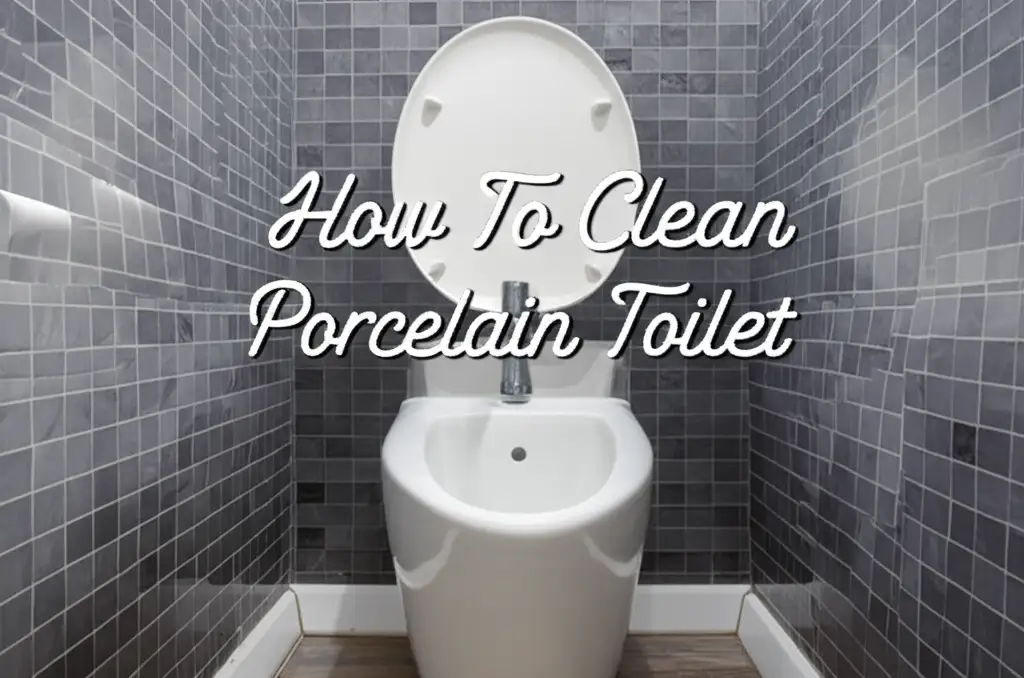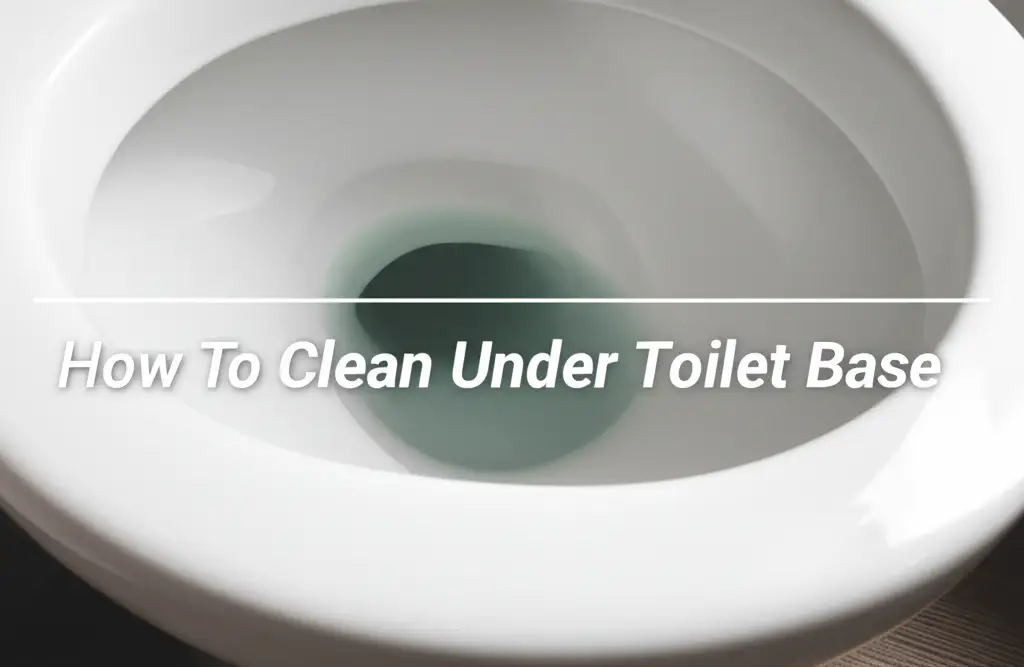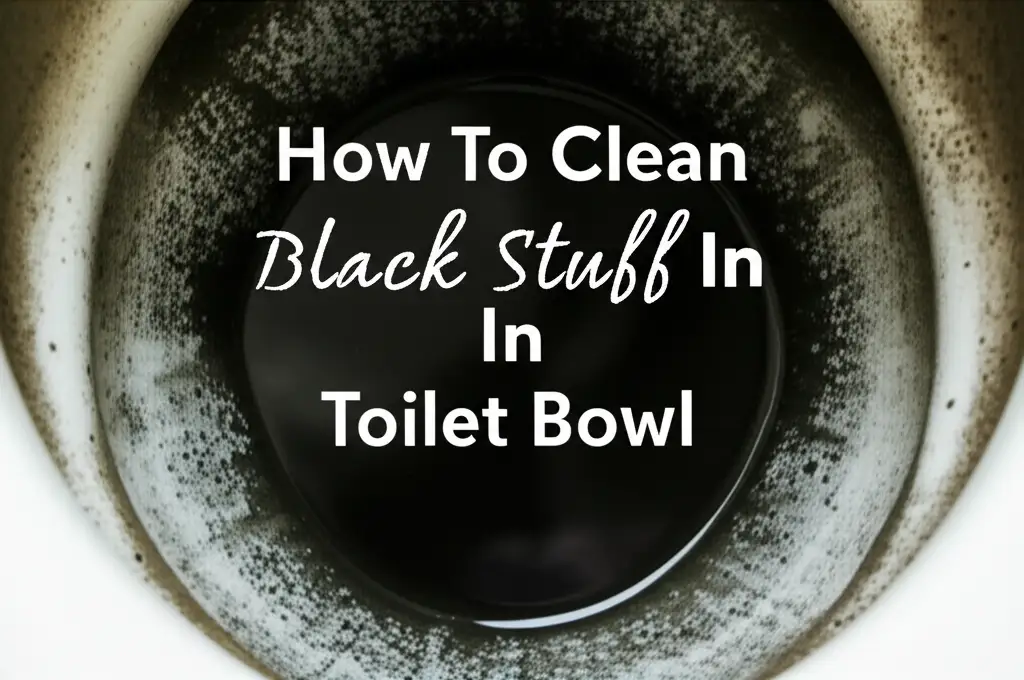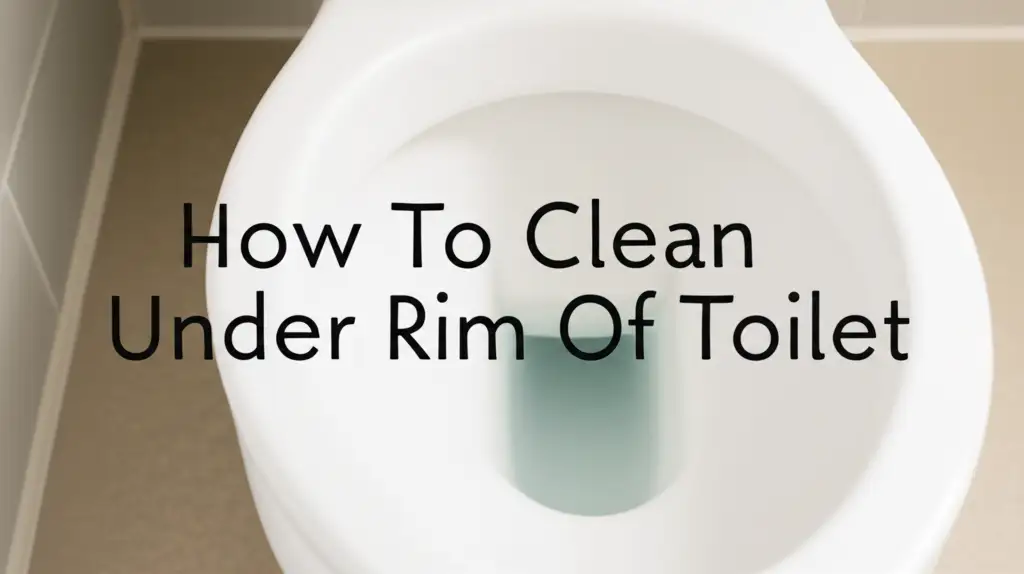· Bathroom Cleaning · 14 min read
How To Clean Porcelain Toilet

How To Clean Porcelain Toilet: A Complete Guide
A clean bathroom starts with a spotless toilet. Keeping your porcelain toilet sparkling and hygienic is essential for any home. You use it every day, so it needs regular attention. Porcelain is durable, but it can get stained or accumulate grime without proper care. This article provides a comprehensive guide. I will show you how to clean your porcelain toilet, from daily upkeep to tackling tough stains. You will learn about safe products and effective techniques. We will cover cleaning the bowl, the tank, and the exterior. By the end, you will have the knowledge to maintain a clean and fresh toilet with ease.
Takeaway:
- Regular cleaning prevents buildup and stains.
- Gather the right tools and cleaning agents before you start.
- Target specific stains like hard water, rust, and rings with appropriate methods.
- Clean all parts of the toilet: bowl, rim, tank, seat, and exterior base.
- Natural cleaners like vinegar and baking soda offer effective alternatives.
Cleaning a porcelain toilet involves regular scrubbing with a toilet brush and suitable cleaner to remove grime and prevent stains. For deeper cleaning, specialized products or natural solutions like vinegar and baking soda effectively tackle tough stains, hard water marks, and rust, ensuring hygiene and maintaining the porcelain’s luster.
1. Gather Your Tools for a Sparkling Porcelain Toilet
Before you begin cleaning your porcelain toilet, preparation is key. Having all your supplies ready makes the task quicker and more efficient. I always make sure I have my protective gear on hand first. This includes rubber gloves to protect your skin from chemicals and germs. An old apron or clothes you do not mind getting dirty are also a good idea.
Next, gather your cleaning agents. A good quality toilet bowl cleaner is essential for daily and weekly cleaning. For tough stains, you might need a specialized stain remover. I also keep a bottle of white vinegar and baking soda for natural cleaning solutions. These items are gentle on porcelain and effective against many common issues.
Do not forget your cleaning tools. A sturdy toilet brush is crucial for scrubbing inside the bowl. Make sure it has strong bristles that can reach under the rim. I also use a separate sponge or cloth for cleaning the exterior of the toilet. This prevents cross-contamination. For persistent rings, a pumice stone can be a lifesaver, but use it carefully on porcelain. Having everything within reach helps you clean safely and effectively. You can also learn how to keep your toilet brush clean to avoid spreading germs.
2. Daily and Weekly Cleaning Routines for Your Porcelain Toilet
Maintaining a clean porcelain toilet does not have to be a major chore. Regular, simple routines prevent dirt and grime from building up. I find that a quick daily wipe-down makes a huge difference. After each use, a quick wipe of the seat and rim with a disinfecting wipe keeps germs at bay. This prevents surface dirt from becoming stubborn stains.
For weekly cleaning, a more thorough approach is necessary. I start by flushing the toilet. Then, I apply a commercial toilet bowl cleaner or a mixture of vinegar and baking soda inside the bowl. Make sure the cleaner reaches all areas, especially under the rim. This is where bacteria and grime often hide. You can find detailed tips on how to clean under the rim of a toilet for a complete clean.
Let the cleaner sit for 5-10 minutes. This allows it to break down dirt and kill germs. While it sits, I wipe down the exterior of the toilet. This includes the lid, the tank, the handle, and the base. Use an all-purpose bathroom cleaner or a disinfectant spray for these surfaces. Finally, scrub the inside of the bowl thoroughly with your toilet brush. Pay attention to the waterline and any visible stains. Flush the toilet multiple times until the water runs clear and the bowl is sparkling. This routine keeps your toilet fresh and extends its life.
3. Deep Cleaning Your Porcelain Toilet Bowl for Tough Stains
Sometimes, regular cleaning is not enough for your porcelain toilet. Tough stains like toilet rings, hard water deposits, or mineral buildup need a deep cleaning approach. These stains often form over time, especially in areas with hard water. I have found that specific treatments are needed for these stubborn marks.
First, address the dreaded toilet ring. This ring forms at the waterline and is usually caused by mineral deposits and bacteria. I begin by emptying the toilet bowl as much as possible. You can do this by turning off the water supply and flushing. Then, apply a strong toilet bowl cleaner designed for rings or a generous amount of white vinegar. Let it soak for several hours or even overnight for best results. Scrub vigorously with a stiff-bristled toilet brush. For persistent rings, explore specific methods for how to clean a toilet ring stain.
Hard water stains and calcium buildup appear as white or yellowish crusty deposits. Vinegar is excellent for these. Pour a few cups of white vinegar into the bowl and let it sit for a few hours. The acid helps dissolve the minerals. For really tough spots, you can make a paste of baking soda and vinegar and apply it directly. Scrub with a non-abrasive scrubber. Learning how to clean calcium buildup in your toilet will make this process easier. If these stains persist, consider using a pumice stone. However, use caution. Always test it on an inconspicuous area first to ensure it does not scratch the porcelain. This deep cleaning will restore your toilet’s pristine appearance.
4. Removing Stubborn Stains from Porcelain Toilets: Rust and Other Discolorations
Rust and other discolorations can be particularly frustrating on porcelain toilets. These stains often appear as reddish-brown marks and are common in homes with older pipes or well water. I know how challenging they can be to remove. Standard cleaners often do not work against them.
For rust stains, acidic cleaners are usually effective. Oxalic acid is a common ingredient in commercial rust removers for toilets. I recommend applying a specialized rust remover directly to the stain. Allow it to sit for the time recommended on the product label. This chemical reaction breaks down the rust. After the waiting period, scrub the area vigorously with your toilet brush. Rinse by flushing. For detailed guidance, check out articles on how to clean rust from a toilet bowl.
Sometimes, general yellowing or other unexplained stains appear. These might be a combination of hard water, mold, or various residues. Bleach can be very effective for general discoloration and sanitization. Pour a cup of bleach into the toilet bowl and let it sit for about 30 minutes. Be sure to ventilate the bathroom well when using bleach. Scrub and flush afterwards. Remember, never mix bleach with other cleaners, especially those containing ammonia or acids like vinegar. This can create dangerous fumes. For overall stained porcelain, broader strategies for how to clean a stained toilet bowl can provide additional help. If all else fails, a pumice stone can gently abrade away the stain, but always test it first to avoid scratching the porcelain.
5. Using Natural Cleaning Solutions for Your Porcelain Toilet
Many people prefer to use natural cleaning solutions for their porcelain toilets. I often opt for these methods myself, especially for regular maintenance. They are environmentally friendly, cost-effective, and safe for most porcelain surfaces. Plus, they avoid the harsh chemicals found in some commercial cleaners.
White vinegar is a cleaning powerhouse. Its acidity makes it excellent for dissolving mineral deposits, soap scum, and mild stains. To clean your toilet bowl, pour two to three cups of white vinegar into the bowl. Let it sit for at least an hour, or overnight for tougher stains. The longer it sits, the more effective it will be. Then, scrub with your toilet brush and flush. Vinegar also helps to deodorize the toilet naturally. It is a fantastic choice for preventing new buildup. You can even use it for cleaning stained porcelain sinks too.
Baking soda is another versatile natural cleaner. It is a mild abrasive and a deodorizer. For a natural scrub, sprinkle a generous amount of baking soda into the toilet bowl. You can then spray or pour white vinegar over it. This will create a fizzing action, which helps lift dirt and grime. Let the mixture fizz for 15-30 minutes. Then, scrub the bowl thoroughly with your toilet brush and flush. For a deeper clean of the tank, consider methods for how to clean your toilet tank with baking soda. A paste made from baking soda and a little water can also be used to scrub stubborn spots on the exterior porcelain surfaces. These natural solutions offer a gentle yet effective way to keep your toilet clean.
6. Cleaning the Toilet Tank and External Porcelain Surfaces
A complete toilet cleaning goes beyond just the bowl. The toilet tank and the external porcelain surfaces also need attention. I have learned that neglecting these areas can lead to odors and unsightly buildup. Cleaning them ensures your entire toilet is hygienic and looks its best.
Let’s start with the toilet tank. Over time, mineral deposits, mold, or mildew can accumulate inside the tank. This can affect the toilet’s flushing mechanism and sometimes cause strange odors. To clean the tank, turn off the water supply valve usually located behind the toilet. Flush the toilet to empty the tank. Once empty, you can add a cup or two of white vinegar to the tank. Let it sit for several hours or overnight. The vinegar will help break down buildup. Lightly scrub the inside surfaces of the tank with a non-abrasive brush or sponge. Turn the water supply back on and flush a few times to rinse out the tank. For common issues like a dirty fill valve, learning how to clean a toilet fill valve can be helpful.
Next, focus on the external porcelain surfaces. This includes the lid, the tank’s exterior, the flush handle, and the toilet’s base. These areas collect dust, hair, and splashes. Use a general bathroom cleaner or a disinfectant spray. Spray the surfaces and wipe them down with a clean cloth or paper towels. Pay extra attention to the base where the toilet meets the floor. This area can gather dust, grime, and even mildew. You can find specific strategies for how to clean under your toilet base for a truly spotless result. Regular cleaning of these external parts prevents unsightly buildup and keeps your bathroom smelling fresh.
7. Maintaining Your Porcelain Toilet’s Luster and Hygiene
Keeping your porcelain toilet in top condition requires ongoing maintenance. It is not just about cleaning when it looks dirty. Regular care helps prevent future problems and extends the life of your toilet. I always focus on prevention to make my cleaning tasks easier.
One simple maintenance tip is to flush thoroughly after every use. This helps wash away potential stain-forming residues. Also, ensure your toilet bowl is not continuously running. A constantly running toilet wastes water and can contribute to hard water stains if the water supply is mineral-rich. If you notice it running, address the issue promptly.
Consider using toilet bowl tablets that slowly release cleaning agents. These can help reduce the buildup of rings and stains between cleanings. However, be cautious with some tablets. Some products contain harsh chemicals that might degrade rubber parts in the tank over time. Always read product labels carefully.
Finally, proper bathroom ventilation is key. A well-ventilated bathroom helps reduce humidity. High humidity promotes mold and mildew growth in and around the toilet. Turn on the exhaust fan during and after showers. This little step goes a long way in keeping your porcelain toilet clean and preventing recurring issues.
8. Common Mistakes to Avoid When Cleaning Your Porcelain Toilet
Cleaning your porcelain toilet seems straightforward, but certain mistakes can damage the fixture or make the job harder. I have learned a few things the hard way, so I want to share common pitfalls to avoid. Knowing these can save you time and protect your toilet.
First, never use abrasive cleaners or tools on porcelain unless specifically instructed. Steel wool, scouring pads, or harsh powdered cleansers can scratch the smooth, protective glaze of the porcelain. Once scratched, porcelain becomes much more prone to staining and harder to clean. Always opt for soft cloths, sponges, or toilet brushes. Even pumice stones should be used with extreme care and only on very tough stains, testing a hidden spot first.
Another common mistake is mixing cleaning chemicals. As mentioned before, never mix bleach with ammonia-based cleaners or acidic cleaners like vinegar. This combination creates highly toxic fumes that are dangerous to inhale. Always use one product at a time and rinse thoroughly before applying another. Follow product instructions precisely.
Finally, do not neglect the lesser-seen areas. Many people only clean the inside of the bowl. However, the toilet tank, the underside of the seat, and the base of the toilet can harbor germs and buildup. Cleaning these areas regularly is essential for overall hygiene. A thorough cleaning regimen covers all parts of the toilet, ensuring no spot is missed. Avoiding these mistakes will help you maintain a pristine and well-preserved porcelain toilet.
FAQ Section:
Q1: How often should I clean my porcelain toilet? A1: I recommend a quick wipe-down daily and a thorough cleaning of the bowl and exterior at least once a week. If your toilet gets heavy use or you live in an area with hard water, you might need to clean it more often, perhaps two to three times a week. Regular cleaning prevents stubborn stains and buildup from forming.
Q2: Can I use bleach on my porcelain toilet? A2: Yes, you can use bleach on porcelain toilets. Bleach is an effective disinfectant and can whiten porcelain. I often use it for tough stains and sanitization. Remember to use it in a well-ventilated area and never mix it with other cleaners, especially those containing ammonia or acid, as this creates dangerous fumes.
Q3: What causes yellow stains in a porcelain toilet, and how can I remove them? A3: Yellow stains in a porcelain toilet are often caused by hard water minerals, iron, or urine buildup. I find that white vinegar is a great natural solution. Pour a few cups into the bowl and let it sit overnight. For stubborn stains, a paste of baking soda and vinegar or a commercial rust remover can also be effective.
Q4: Is it safe to use a pumice stone on porcelain? A4: A pumice stone can be effective for removing very tough stains like toilet rings or hard water deposits that other cleaners cannot touch. However, use it with extreme caution. Always wet both the pumice stone and the porcelain surface first. Rub gently, and test on an inconspicuous area to ensure it does not scratch the porcelain.
Q5: How can I prevent hard water stains in my toilet? A5: Preventing hard water stains involves regular cleaning and some proactive measures. I recommend using a toilet cleaner designed to prevent mineral buildup weekly. Placing a cup of white vinegar in the toilet tank periodically can also help. Installing a water softener for your home is the most effective long-term solution if you have very hard water.
Q6: What is the best way to clean the tricky area under the toilet rim? A6: The area under the rim can be difficult to reach. I use an angled toilet brush or a squirt bottle with a nozzle to apply cleaner directly under the rim. Let the cleaner sit for 10-15 minutes, allowing it to work. Then, use the brush to scrub thoroughly. Some specialized rim brushes are also available to make this task easier.
Conclusion
Keeping your porcelain toilet clean is a vital part of maintaining a healthy and inviting home. We have explored everything from routine daily wipes to aggressive stain removal strategies. You now have the knowledge to tackle common issues like hard water rings, rust, and general grime. Remember, consistency is key when it comes to cleaning porcelain toilet fixtures. Regular care prevents small problems from becoming big ones. Whether you choose commercial products or natural alternatives like vinegar and baking soda, arm yourself with the right tools and techniques. A sparkling clean porcelain toilet not only looks good but also contributes to a more hygienic environment. Take these steps to enjoy a fresh and pristine bathroom every day. Begin your journey to a cleaner, brighter toilet today!
- porcelain toilet cleaning
- toilet bowl cleaner
- remove toilet stains
- deep clean toilet
- bathroom hygiene




